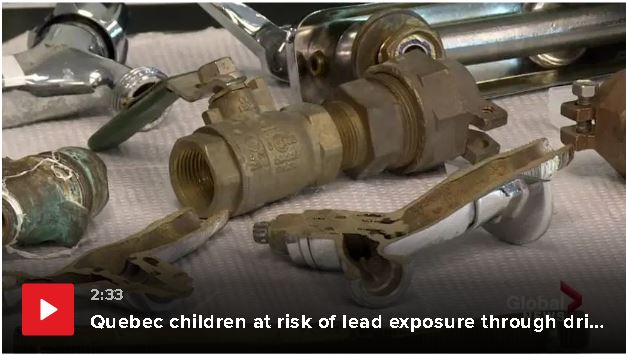Rebecca Zagozewski, executive director with the Saskatchewan First Nations Water Association, says cisterns can pose health risks to those who rely on them. She says the structures can have cracked lids, which allows all sorts of debris to get into them — including rats, mice, drowned puppies and garbage — and they’re often not cleaned properly. On top of that, she says the Saskatchewan First Nations Water Association is concerned that there is no certification program for water truck drivers. The group wants to create such a program where drivers would have to be trained in how to keep the water safe and be held accountable if things go wrong. “Because right now there’s no accountability,” she says.
Former Neskantaga contractor accused of cutting corners in other First Nations
“They cut corners every day, every day,” said Justin Gee, vice-president of First Nations Engineering Services Ltd. Gee said he encountered these recurring problems while overseeing the work of a construction firm, Kingdom Construction Limited (KCL), building a water treatment plant 10 years ago in Wasauksing First Nation, along the eastern shore of Georgian Bay, about 250 kilometres north of Toronto. “You have to be on them every step of the way,” said Gee, who was the contract administrator on the project. “You can’t leave them on their own.”
Oneida Nation of the Thames tap water different than neighbouring non-Indigenous communities
ONEIDA NATION OF THE THAMES — Jennifer George’s home sits on a gravel road that separates this Indigenous community near London, Ont., from the neighbouring township of Southwold. On George’s side of the road, virtually no one trusts the drinking water that flows from the Thames River to their homes. Many have the same 18-litre blue jugs that line the floor of George’s kitchen, ubiquitous sources of water for drinking and cooking.
Côte Saint-Luc has some of the worst tap water in Quebec due to lead contamination
The Montreal Island city of Côte Saint-Luc has some of the worst tap water in the province, according to testing results for lead released through access to information legislation. The test results, compiled by Quebec’s Environment Ministry, show that 46 tap water samples from the Montreal Island city of 30,000 people had more than 10 parts per billion (ppb) of lead over a four-year period from 2015 to 2018.
Investigation reveals dangerous lead levels in some Quebec drinking water
Thousands of Quebecers could be getting misleading information about lead contamination in the water coming out of their taps because the province uses a sampling method that underestimates the true level of exposure, Global News has found through surveys and 84 tests of residential drinking water conducted in five cities across the province. The revelations are based on a collaborative investigation by a team of two dozen journalists from Concordia University’s Institute for Investigative Journalism, Global News and Le Devoir. The journalists fanned out across the province to knock on hundreds of doors, taking water samples for testing that revealed lead levels often higher than city workers had told residents.






